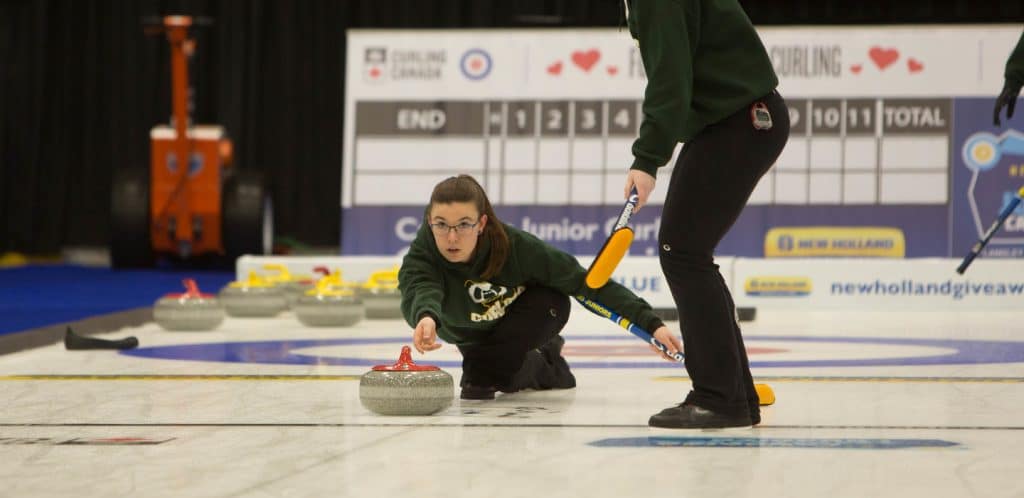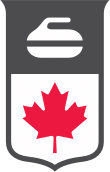Stay Safe with Singles!

New discipline to follow the footsteps of mixed doubles, triples in modified curling format.
As temperatures grow colder and the inevitable winter conditions set in, many curlers across Canada are prepared to lace up their shoes and return to play for the upcoming 2020-2021 curling season.
And though this season may have a different look and feel amid Curling Canada’s COVID-19 Return to Play guidelines, the classic four-person team game has taken on many other formats that remain safe to play.
With mixed doubles, a variant of the sport which has already cemented itself as a titan in curling as an Olympic sport, and triples, Curling Canada’s latest modified curling method, there is ample opportunity for you to enjoy your curling season in a safe and fun manner.
Though COVID-19 is changing the way we approach curling this season, Curling Canada has developed a new format of curling that is entirely COVID-19 compliant: singles.
As its name suggests, curlers compete as individual throwers when playing Singles. However, like all other disciplines, Singles curlers still have the support of sweeper(s) and a line-caller to assist them in executing their shots.
Singles curling involves a series of commonly played shots, with each shot being scored against predetermined criteria, which varies by age and experience.
At the U15 level, the format’s conceptual target, the following six shots are included: Hit & Stay, Draw, Hit & Roll, Guard, Peel, and Draw-Around. Each of these shots is played with both turns, which generates 12 attempts for each Singles curler.
Beyond these 12 attempts, U15 curlers also get two ‘mulligans’ or re-throws. These mulligans can only be used after all 12 initial shots have been played. However, at this point each curler is able to re-throw two of their lowest scored shots. Please note that if there are three or more shots tied with the lowest score, the curler can choose to re-throw any two of them.
The scoring system for all shots is the same: three points (executed as intended), two points (executed within tolerance), and zero points (executed outside of tolerance).
MIck Lizmore, Head Coach of the Canadian National Wheelchair Curling team and former curling instructor and consultant at the University of Alberta, has had an integral role in the development of the new curling discipline. Lizmore believes the format will be a unique developmental tool for youth curling.
“One of the major goals for developing a singles format was to help with the development of athletes and to provide a drill that individuals can compete on that is simultaneously challenging while providing opportunities for success for curlers of various ages,” said Lizmore.
Development of the discipline, though originally conceived by Curling Canada’s National Training Centre in Edmonton, has been a collective effort from coaches and players alike.
“I was tasked with assisting in the development of the format with the support and assistance of the athletes in our high school curling academy,” said Lizmore. “Since then, feedback from athletes and coaches in able-bodied and wheelchair curling have guided subsequent changes to and uses of the format.”
Lizmore firmly believes that the singles format will allow participants to reevaluate how they approach the game and support better overall shot making.
“I think singles can supplement a variety of curling programs and offer a way for curlers in Canada to develop well-rounded skill sets,” said Lizmore. “The variety of shots should help athletes (and coaches) to identify their current strengths and current works in progress, and provide a clear singular focus on the ‘art’ and ‘personal ownership’ of shot making. In a regular game of doubles or fours curling, we often ask ‘what is the appropriate shot to play in this situation?’ and ‘if I were not to make this shot perfectly, where is a good Plan B or alternative.’”
Current World Wheelchair Silver medalist, Jon Thurston, maintains that the singles format which Thurston personally uses in his practice regiment helps simulate game situations.
“The singles drill has been a great addition for training. It’s challenging and closely resembles sequence and shot making one might see in a typical game. I utilized it regularly and can say it helped improve my shot making last season,” said Thurston.
Canada’s wheelchair athletes continue to see success, boasting a silver medal at the 2018 Winter Olympics in Pyeongchang (skip Mark Ideson), a 2013 World Wheelchair Curling Championship gold medal (skip Jim Armstrong), and the aforementioned 2020 World Wheelchair Curling Championship silver medal (fourth Jon Thurston).
Lizmore, head coach of the Canadian Wheelchair team, understands that much of this is a more advanced methodology in curling than many players have been exposed to, but is confident that the lessons from the format are a quality introduction to high performance curling.
“Executing a particular shot within the context of the game can be a lot to think about already,” said Lizmore. “When we talk about technical training, the pendulum swings the other way with a focus that often isolates onto movement patterns with less of an emphasis on the end result. The game of Singles serves as a bridge of sorts. In Singles, we are asked to direct our focus on the approach to a predetermined shot and to simply ‘get the job done’. The player is put into a position where they can focus on where the broom is placed, how much weight to throw, and then execute! A format like Singles can be a part of a well-rounded training program for players that still serves up a healthy serving of competition and pressure.”
Curling Canada has plans to expand the format into a nationwide competition at the U15 level, but plans for its unveiling have been set back due to COVID-19. Thankfully, singles remains a format that any players, new or experienced, can enjoy all while being safe and socially distant at your local curling facility.
Stay in touch with Curling Canada online for details as they emerge on Twitter, Facebook, Instagram or bookmark our front page in your favourite browser at www.curling.ca for the latest.




